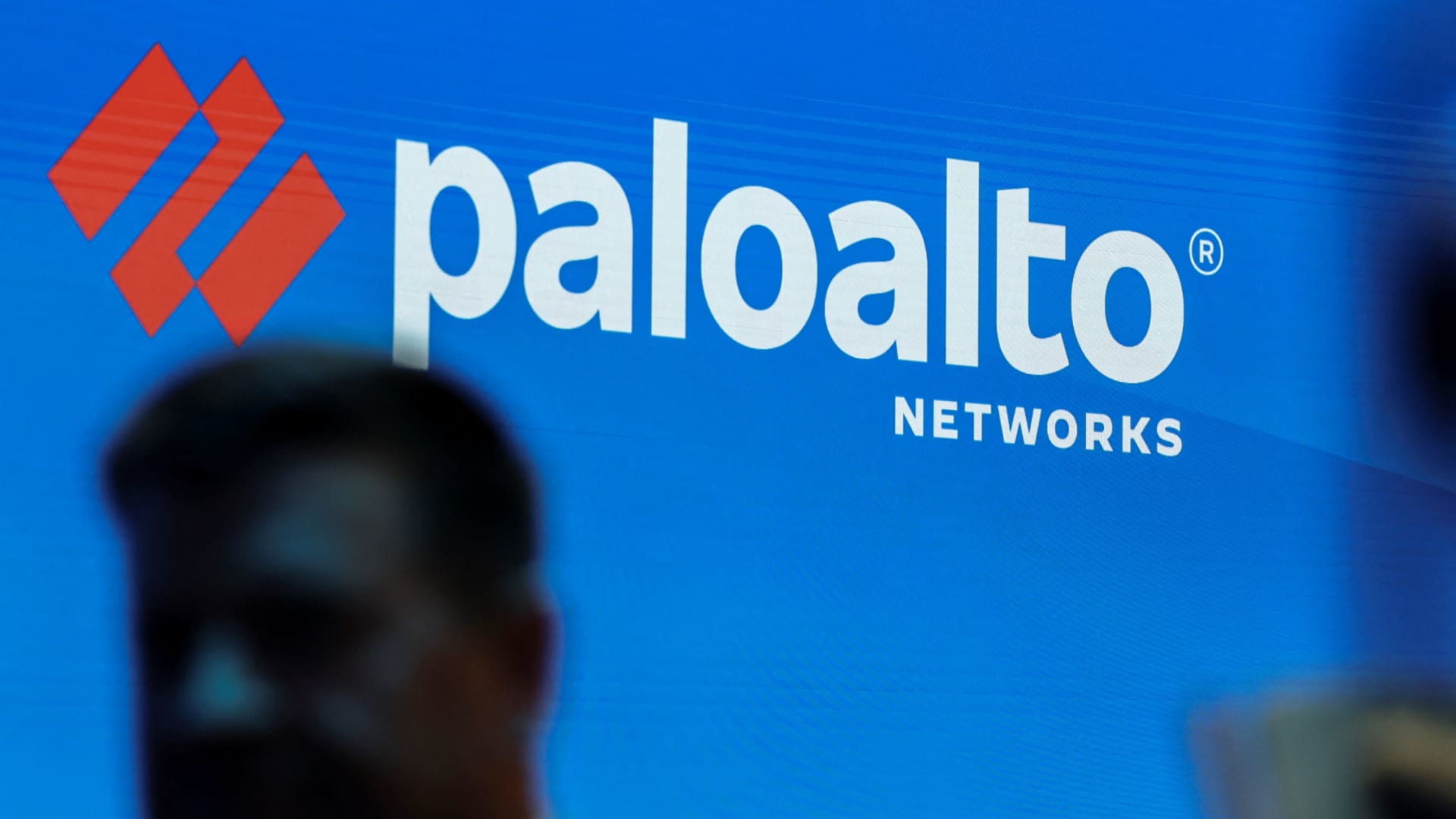Palo Alto Networks Surprises with Earnings Growth Despite Margin Pressures
In a financial twist that caught Wall Street’s attention, Palo Alto Networks (PANW) reported stronger-than-expected earnings and revenue for its latest quarter while grappling with shrinking gross margins. The cybersecurity giant announced its Q4 2023 results on August 18, 2023, revealing a 26% year-over-year revenue jump to $1.95 billion alongside a 5% margin contraction. This mixed performance has sparked intense debate among analysts about the company’s strategic direction in an increasingly competitive cloud security market.
Beating Expectations Amid Economic Headwinds
Palo Alto Networks defied broader tech sector struggles by posting non-GAAP earnings of $1.44 per share, surpassing analyst estimates of $1.28. The company’s total revenue growth outpaced its own guidance range of $1.925-$1.955 billion, marking its eighth consecutive quarter of accelerating year-over-year sales increases. However, the celebration was tempered by gross margins slipping to 72.5% from 77.5% in the prior-year period.
“This is a classic good news/bad news scenario,” noted cybersecurity analyst Mark Henderson of TechInsight Partners. “While Palo Alto continues to dominate in next-gen security solutions, their margin compression suggests they’re paying a price for that growth through heavier infrastructure investments and competitive pricing.”
Key performance highlights include:
- Billings growth of 18% to $3.2 billion
- Remaining performance obligations up 30% to $8.9 billion
- Free cash flow margin of 38.4%, up 200 basis points
The Margin Mystery: Short-Term Pain or Structural Shift?
Investors zeroed in on the margin contraction during the earnings call, with CEO Nikesh Arora attributing the decline to three primary factors:
- Accelerated data center buildouts to support AI-powered security services
- Higher personnel costs for technical support teams
- Increased use of third-party cloud infrastructure for product testing
“We’re planting seeds today that will bear fruit in 2024 and beyond,” Arora told analysts. “Our Cortex XSIAM platform represents a $10 billion market opportunity, and we’re investing ahead of the curve.” The company’s next-gen AI security products now account for 38% of total revenue, up from 29% a year ago.
However, not all observers are convinced. “There’s a fine line between strategic investment and margin erosion becoming structural,” warned Sarah Chen, portfolio manager at ClearBridge Investments. “If we see another quarter of margins below 73%, it might signal deeper competitive pressures from CrowdStrike and Zscaler.”
Market Reaction and Analyst Sentiment
The stock initially dipped 4% in after-hours trading before rebounding to finish the next day up 2.3% as investors digested the long-term growth narrative. Wall Street remains divided:
- Bull Case: JPMorgan maintains an Overweight rating, citing “best-in-class platform strategy” and $2.4 billion in cash reserves
- Neutral View: Morgan Stanley kept Equal Weight, noting “execution risks in integrating recent acquisitions”
- Bear Perspective: Rosenblatt cut price target to $240, warning of “growth at all costs mentality”
Notably, short interest had climbed to 3.8% of float prior to earnings—the highest level in 18 months—reflecting growing skepticism about premium valuations in the cybersecurity sector.
Strategic Shifts and Competitive Landscape
Palo Alto’s recent moves reveal a company in transformation:
Product Mix Evolution: The company has aggressively shifted toward cloud-native and AI-driven solutions, with its SASE (Secure Access Service Edge) platform growing 89% year-over-year. This aligns with Gartner’s projection that 65% of enterprises will adopt SASE by 2025, up from 25% today.
Partner Ecosystem: A new alliance with Amazon Web Services, announced August 15, positions Palo Alto to challenge Microsoft’s security dominance in Azure environments. Early adoption metrics show 1,200 new AWS customer engagements in Q4.
Yet challenges loom. Competitor CrowdStrike continues gaining market share in endpoint protection, while Fortinet maintains its firewall stronghold. “Palo Alto can’t afford to be a jack-of-all-trades,” cautioned Forrester analyst Allie Mellen. “They need to prove their AI claims translate into measurable threat prevention advantages.”
Future Outlook: Guidance and Growth Levers
Management’s forward-looking statements struck a cautiously optimistic tone:
- Q1 2024 revenue guidance of $1.82-$1.85 billion (20-22% growth)
- Full-year billings growth forecast of 16-18%
- Operating margin target of 22-23%, down from 24.5% in FY2023
The company identified three key growth accelerators:
- XSIAM Adoption: The AI-driven security platform now has 400 customers, up from 150 at launch
- International Expansion: EMEA revenue grew 34% year-over-year, outpacing North America’s 23%
- Consolidation Trend: 62% of new deals included 3+ products, up from 51% last year
CFO Dipak Golechha emphasized cost discipline moving forward: “We expect capital expenditures to moderate in the second half as our new data centers come online. The margin bottom is likely behind us.”
Implications for the Cybersecurity Sector
Palo Alto’s results serve as a bellwether for several industry trends:
Enterprise Spending Patterns: Despite macroeconomic uncertainty, cybersecurity budgets remain resilient. A recent CIO survey showed 78% of organizations plan to increase security spending in 2024, with cloud security tools being the top priority.
AI Arms Race: The company’s $195 million acquisition of AI startup LightCyber in Q3 underscores the strategic importance of machine learning capabilities. Rivals have made similar moves, with CrowdStrike buying Reposify and SentinelOne acquiring Attivo.
Platform vs. Point Solution Debate: Palo Alto’s ability to cross-sell multiple products (average of 4.2 per customer) validates its platform approach, though some analysts question whether this creates integration complexity.
As the cybersecurity landscape evolves, Palo Alto Networks stands at a crossroads. Its ability to balance growth investments with margin recovery will determine whether it remains the sector’s gold standard or cedes ground to more nimble competitors. For investors, the coming quarters will be critical in assessing whether current challenges represent temporary growing pains or fundamental shifts in the company’s economic model.
For deeper analysis of cybersecurity investment trends, subscribe to our premium market intelligence service featuring weekly sector updates and exclusive executive interviews.
See more Business Focus Insider Team

